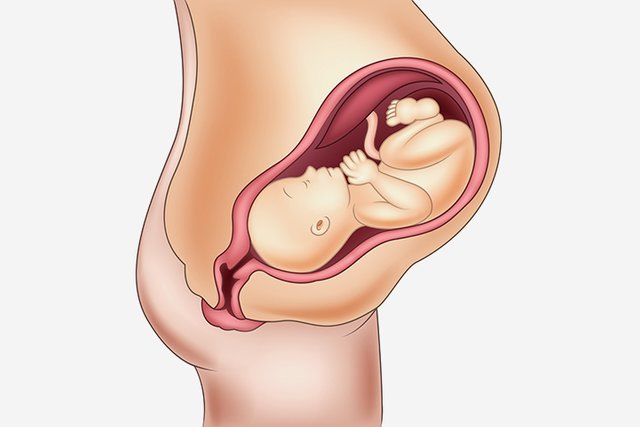How A Baby's Position In Womb Can Affect Your Delivery
The baby in your womb tends to change his position constantly, depending on how you carry yourself! Yes, you’ve read that right. A baby can be posterior or anterior exclusively on how you sit or walk on a daily basis. Two midwives, Jean Sutton and Pauline Scott, have explained different baby birthing positions and the best position for a baby to be in the womb when being born.
There are two main baby positions known as occiput posterior and occiput anterior. They depend on what the baby is facing inside the womb and how he is positioned.
[Occiput Anterior]
Occiput means the back of the baby’s head and anterior means front. In this position, the baby has his head down and back against your stomach. This helps him to move his head and neck, while he pins his chin close to his chest. With this, the smallest part of his head can easily move out of the birth canal.
This is one of the best, and mostly the natural, positions for birthing.
[Occiput Posterior]
If the back of your baby is against your back, then the baby is in an occiput posterior position. This mostly happens due to your sitting position. If you are constantly reclining with your backs backward, and the hips at lower angles than your knees, then the baby tends to slide towards your pelvis. This puts him in a posterior position, making it difficult for him to birth.
What Are The Different Baby Positions In The Womb?
There are many different positions that babies may take in the womb. These positions make labor either easy or difficult. During pre-labor, the baby could be in any position, but he usually comes into the right position (coming out head-first) by the time labor is induced. This, however, may not always happen, which is when the doctor opts for a C-section.
Downward Facing:
Going by the name, the baby in the womb faces vertically downwards, in the occiput anterior position, and comes out of the womb with the smallest part of his head first. This aids in easy delivery, as the baby is turned slightly sideways, and finds the passage easily because of his tiny head. As the mother pushes, the baby’s head applies pressure and the contractions aid an easy delivery.Lying Sideways:
This could be one of the toughest positions that a baby could be in when the mother is in labor. As the baby lies sideways, one of his shoulders points at the birth canal. Imagine this as trying to pull out a handful of candies from a small narrow neck jar. Difficult, isn’t it? In this position, the baby is on his back facing the birth canal with his head away from it.
In this position, the doctor can try and change the baby’s position by placing his hands on your abdomen and rotating the baby into a correct position. However, if the labor is induced, the doctor may have to opt for a C-section.
Bottoms First:
The baby here is in a breech presentation. This means that the baby’s head is at the top of the uterus, and the baby’s buttons are at the birth canal. The hands and legs are in front of the body, and they tend to stick out instead of staying close to the body. Just like in the Lying Sideways position, your doctor might manually try to change the baby’s position. If this does not work, he may opt for a C-section.Upward Facing:
Yet another difficult position for delivery, in this the baby faces your abdomen and cannot easily come out of the canal. As the baby’s head is in the posterior position, he cannot extend his head out of the canal as the pubic bone blocks his movements. The doctor may either use his hands or a pair of forceps to rotate the baby.
He may suggest you to move around and sit or stand to aid the baby in moving out. If this does not work, you may require an incision to enlarge the opening of the vagina for pulling out the baby.
- Feet First:
This position is very similar to the bottoms first position. The legs don’t stick out away from the body, but are folded at the knees and are at the birth canal. They are closer to the buttocks, and the buttocks are pushed a little behind. The head faces the top of the uterus, and the hands are in front of the face.
Here too, the doctor may try and change the position of the baby manually and opt for a C-section in case the baby doesn’t change position.
- Twins:
There are if-else conditions in the case of twins. If one of the twins is facing down in the occiput anterior position, he can be delivered, and the next one can be delivered buttocks first or feet first. This would be possible, provided one twin is facing the legs of the other twin. If this procedure cannot be followed, or only one of the twins can be pulled out, then the other or both would have to be brought out through C-section.
For your baby to be in the right position, keep your hips at higher angles than your knees. Rest well and lean as much forward as you can during contractions. Remember, some effort is necessary from you because though the doctor may be able to alter the baby’s positions manually, it could lead to a C-section too.
Thank you
